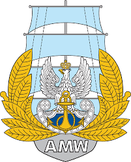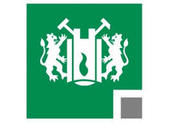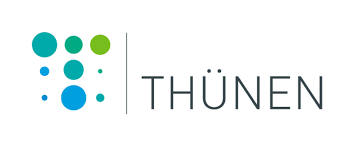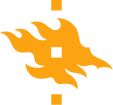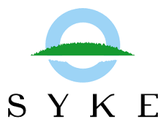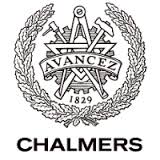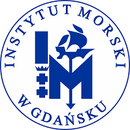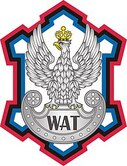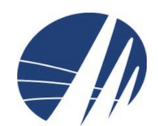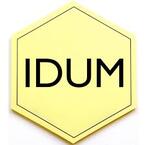Project Partners
The DAIMON and DAIMON 2 projects perceive the Baltic Sea Region as an integral ecosystem, disregarding national or administrative borders. The management of dumped chemical warfare agents is a transboundary challenge and such can be taken up only by means of transnational and cross-sectoral cooperation. Below is the list of institutions and organizations collaborating on this worth-while task:
|
The Institute of Oceanology of the Polish Academy of Sciences (IO PAN) is dedicated to scientific research in shelf seas and coastal regions in the Baltic and European Arctic Seas. With their internationally recognized expertise in the field of underwater munitions, IOPAN acts as the lead partner in DAIMON and DAIMON2 projects, as they did already in CHEMSEA and MODUM projects.
Contacts: Jacek Bełdowski, Marta Szubska ul. Powstańców Warszawy 55, 81-712 Sopot, Poland |
|
The Polish Naval Academy (PNA) is a military school under the supervision of the Ministry of National Defense and a military unit carrying out missions related to national defense. It is also a military scientific institution, based in Gdynia, with expertise in operational oceanography, including underwater operations relating to dumped munitions.
Contacts: Jacek Fabisiak, Bartłomiej Pączek ul. Śmidowicza 69, 81-103 Gdynia, Poland |
|
The Technical University of Clausthal (TUC), Department of Informatics, modell-based system analysis and simulation, has recently developed in the SOAM recognition software and database structures to handle and to analyze sonar- and magnetic sensors of an AUV for detecting and localizing dumped ammunition in the Baltic and North sea. In DAIMON and DAIMON 2 they are responsible for the development of the decision-aid software for dumped munitions.
Contacts: Sven Hartmann Adolph Roemer Str. 2a, 38678 Clausthal-Zellerfeld, Germany |
|
north.io GmbH is an IT company specialised in the development of high-performance geoinformatic applications based on the OpenSource AMUCAD software. Their focus lies on sustainability, user-friendliness and technological innovation. north.io GmbH has a vital interest in marine geoinformatics, where they are able to manage and analyze complex relationships based on spatial interconnections. Besides collaboration in DAIMON and partnership in DAIMON2, they are also partner in the NorthSeaWrecks project.
Contact: Jann Wendt Einsteinstraße 1, 24118 Kiel, Germany |
|
The Thünen Institute of Fisheries Ecology is one of the federal research centres under the German Ministry of Food, Agriculture and Consumer Safety. It has expertise in agriculture, forest ecology and fisheries. The Institute of Fisheries Ecology, one of Thünen science institutes, addresses issues related to the effects of anthropogenic pressures on marine ecosystems, with a focus on the effects in fish from the North and Baltic Seas. It is responsible for national chemical and biological monitoring with regards to hazardous substances in biota from offshore regions.
Contacts: Thomas Lang, Ulrike Kammann Herwigstraße 31, 27572 Bremerhaven, Germany |
|
University of Helsinki, the Finnish Institute for Verification of the Chemical Weapons Convention (VERIFIN), is one of the world's leading institutes in the field of analysis of chemical warfare agents in environmental samples. VERIFIN is an accredited and designated laboratory of the Organisation for the Prohibition of Chemical Weapons (OPCW) and a National Authority of Finland defined by the Chemical Weapons Convention (CWC) working under the guidance of the Ministry for Foreign Affairs of Finland
Contacts: Paula Vanninen, Tiina Kauppila A.I.Virtasen aukio 1 ( P.O. Box 55) 1 00114 Helsinki, Finland |
|
The Finnish Environment Institute (SYKE) is a state agency under the Finnish Ministry of Environment carrying most of the environmental research as well as the coordination of national environmental monitoring. SYKE was the coordinator for the former MERCW project.
Contact: Anu Lastumäki Erik Palmenin aukio (P.O.Box 140) 1 00251 Helsinki, Finland |
|
Chalmers University of Technology is a Swedish university located in Gothenburg that focuses on research and education in technology, natural science, architecture, maritime and other management areas. The developed by Chalmers VRAKA model - semi-quantitative risk model as decision support to facilitate prioritization among wrecks that need to be remediated - will be adapted in DAIMON under the aspect of dumped muntions.
Contact: Anders Tengberg 41296 Göteborg, Sweden |
|
The Norwegian Defence Research Establishment (FFI) is experienced in methods for impact evaluation of dumped munitions. Their mission is to give advice to the armed forces and national policy. FFI also participates in the NorthSeaWrecks project.
Contact: John Aasulf Tørnes P.O. Box 25, 2027 Kjeller, Norway |
Strategic partners, associated organisations and other collaborators:
|
BLANO - Munitions in German Marine Waters is a German intergovernmental expert group at the Ministry of Energy, Agriculture, the Environment, Nature and Digitisation
Department of Water Resource Management and Coastal Protection of Schleswig-Holstein. Based on the knowledge and assessments collected from versatile international networks and projects, this expert group develops recommendation for action for the German coastal Länder governments. Contacts: Jens Sternheim, Claus Böttcher Mercatorstrasse 3, 24106 Kiel, Germany |
|
The Alfred Wegener Institute Helmholtz Centre for Polar and Marine Research (AWI) in Bremerhaven is Germany's leading institute for polar and marine research. The AWI Department Ecological Chemistry has broad experience in the development of indicators and expert systems for integrated analysis of chemical and biological data including the assessment of contaminant impact on the marine environment. They were partner in the DAIMON project and are partner in the NorthSeaWrecks project.
Contacts: Ulf Bickmeyer, Mathias Brenner Am Handelshafen 12, 27570 Bremerhaven Germany |
|
Maritime Institute in Gdańsk (MIG) is a R&D unit of the Gdynia Maritime University, with over 60 years of experience in consultations and service in the fields of hydrotechnics, engineering, operational oceanography, maritime law and economics as well as nature protection and monitoring. In DAIMON they were mainly responsible for the detection and mapping of the Baltic underwater munitions with their R/V IMOR.
Contact: Benedykt Hac ul. Długi Targ 41/42, 80-830 Gdańsk, Poland |
|
The Military University of Technology (MUT) in Warsaw is a state military technical school at the university level. The Institute of Chemistry at MUT is a full-time organizational unit of the Faculty of New Technologies and Chemistry, established to conduct teaching and educational, research and training of scientific staff in the disciplines of ecology and environmental monitoring, explosives and fireworks and hazardous material and chemical rescue. They were partners in the DAIMON project.
Contacts: Stanisław Popiel, Jakub Nawała ul. Gen. Kaliskiego 2, 00-908 Warszawa, Poland |
|
The Lithuanian Environmental Protection Agency (LEPA) is charged with organizing, coordinating and performing environmental monitoring and implementing the Lithuanian policy on control of hazadrous substances. The LEPA Marine Research Department has experience with assessments of the environment state at chemical munitions dumpsites in the Lithuanian economic zone and in publishing guidelines for fished munitions in Lithuania. They were partner in the DAIMON project.
Contact: Galina Garnaga-Budré Juozapavičiaus st. 9, 09311 Vilnius, Lithuania |
|
International Dialogue on Underwater Munitions (IDUM) is an NGO founded in Canada in 2004, since 2014 with seat in the Netherlands. It is lobbying for the creation of an internationally binding treaty on all classes (biological, chemical, conventional, and radiological) of underwater munitions, which would lead prevent the further pollution and lead to the cleanup of seas and oceans worldwide. In DAIMON the IDUM contribued with risk analyses.
Contact: Terrance P. Long Niastraat 1, 3531WR, Utrecht, The Netherlands |


